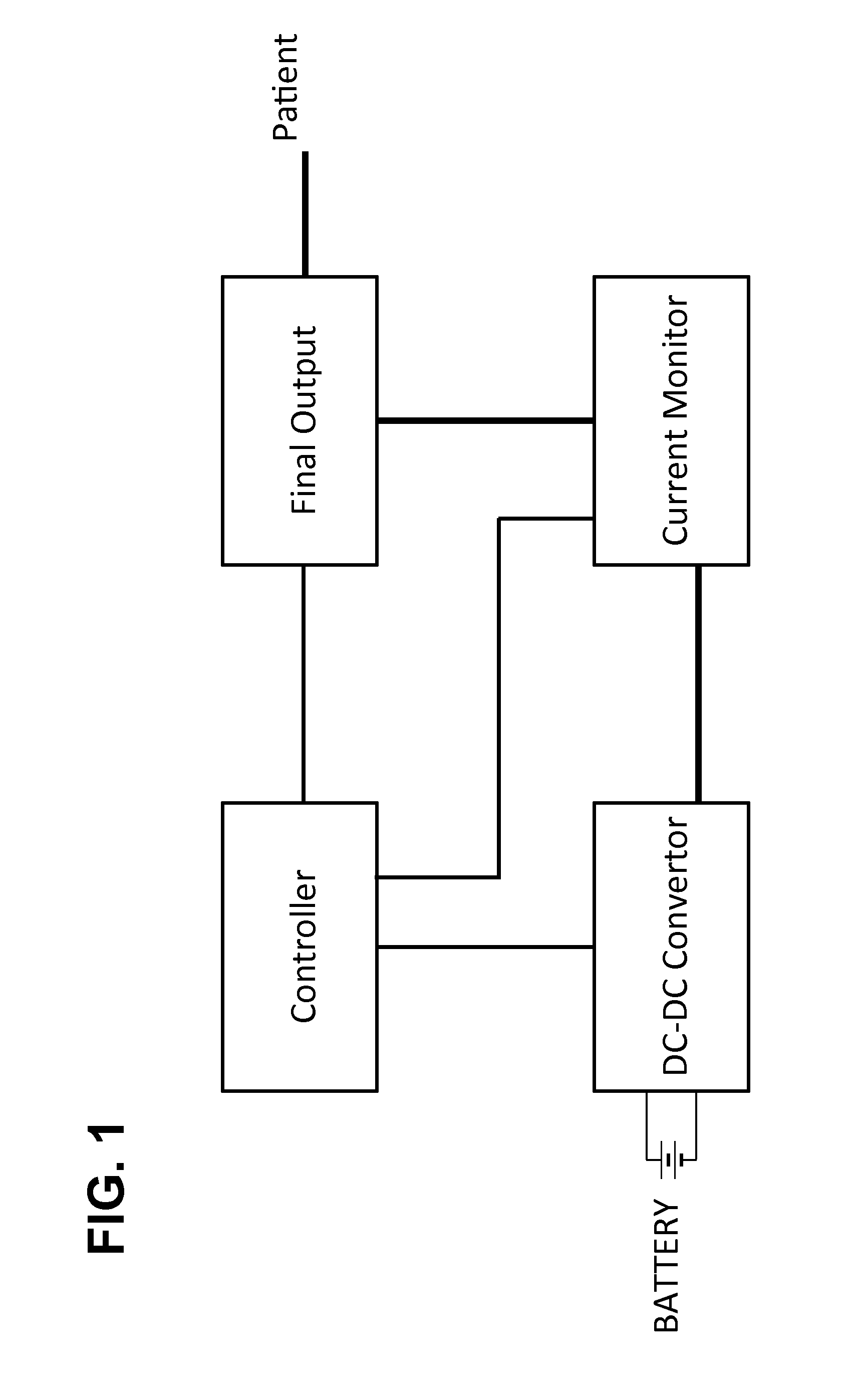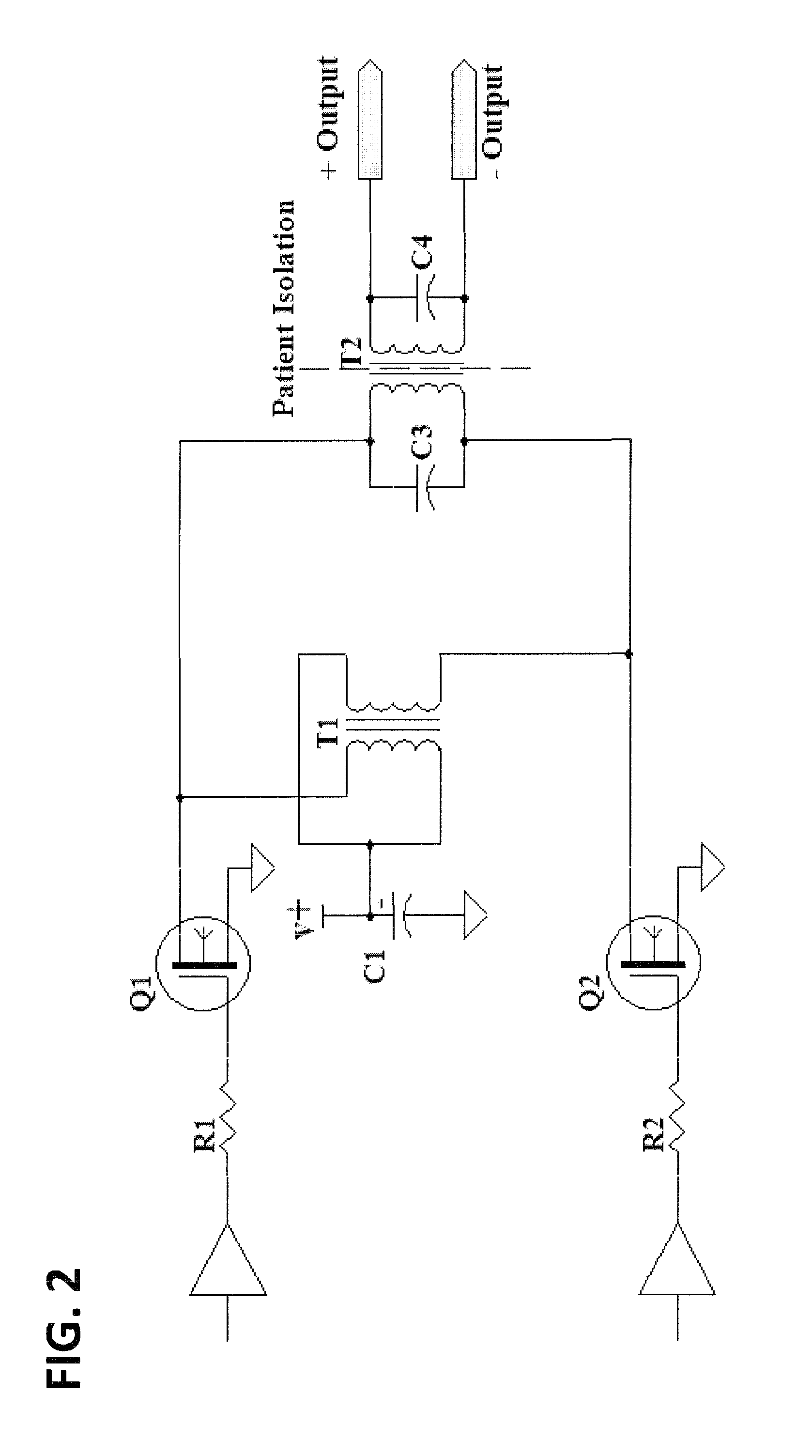Minigenerator
a technology of electric generator and battery pack, which is applied in the field of powering electrosurgical and electrocautery tools and instruments, can solve the problems of inability to provide the amount of power needed for more intensive surgeries in larger organs, and the bulky instrument is too large,
- Summary
- Abstract
- Description
- Claims
- Application Information
AI Technical Summary
Benefits of technology
Problems solved by technology
Method used
Image
Examples
Embodiment Construction
[0025]The design has been optimized for safe, energy-efficient battery operation. All voltage levels in the circuitry are low, at battery level, until the very last transformer T2 (see the final output diagram shown in FIG. 2 illustrating how the last transformer T2 is isolated). The last transformer multiplies the voltage and isolates the patient from the entire circuit. The output stage is simple, but efficient, ideal for battery operation. The use of a “swinging choke” T1 (see FIG. 2) provides the necessary positive and negative outputs by using only two Field Effect Transistors (FETs).
[0026]Using a wide range input DC-to-DC converter design, the latest battery technology can be utilized. Any battery input from about 6 volts up to 24 volts can be accommodated. The output of the DC-to-DC converter does not vary with changes in the input. Therefore the unit can provide an energy output (i.e. radiofrequency or RF output) that is independent of battery voltage. This fixed output feat...
PUM
 Login to View More
Login to View More Abstract
Description
Claims
Application Information
 Login to View More
Login to View More - R&D
- Intellectual Property
- Life Sciences
- Materials
- Tech Scout
- Unparalleled Data Quality
- Higher Quality Content
- 60% Fewer Hallucinations
Browse by: Latest US Patents, China's latest patents, Technical Efficacy Thesaurus, Application Domain, Technology Topic, Popular Technical Reports.
© 2025 PatSnap. All rights reserved.Legal|Privacy policy|Modern Slavery Act Transparency Statement|Sitemap|About US| Contact US: help@patsnap.com



